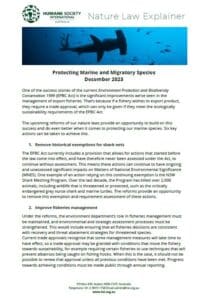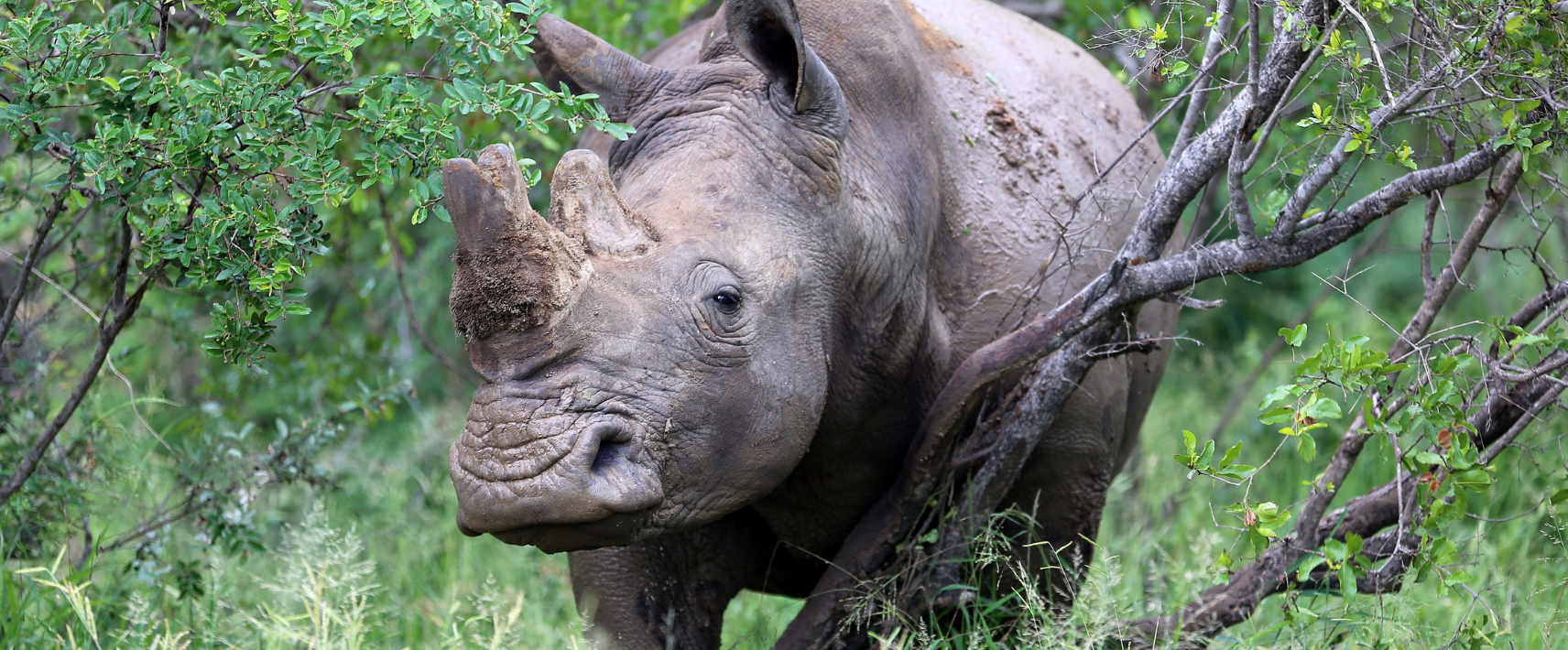One of the most important global meetings on wildlife trade has just wrapped up in Uzbekistan. It’s capital city Samarkand was where governments convened for the 20th Conference of the Parties (CoP20) to the Convention on International Trade in Endangered Species of Wild Fauna and Flora (CITES) to decide how international trade should be managed for some of the world’s most threatened...
One of the success stories of the current Environment Protection and Biodiversity Conservation 1999 (EPBC Act) is the significant improvements we’ve seen in the management of export fisheries. That’s because if a fishery wishes to export product, they require a trade approval, which can only be given if they meet the ecologically sustainability requirements of the EPBC Act.
The upcoming reforms of our nature laws provide an opportunity to build on this success and do even better when it comes to protecting our marine species. Six key actions can be taken to achieve this.
- Remove historical exemptions for shark nets
The EPBC Act currently includes a provision that allows for actions that started before the law come into effect, and have therefore never been assessed under the Act, to continue without assessment. This means these actions can continue to have ongoing and unassessed significant impacts on Matters of National Environmental Significance (MNES). One example of an action relying on this continuing exemption is the NSW Shark Meshing Program. Over the last decade, the Program has killed over 2,000 animals, including wildlife that is threatened or protected, such as the critically endangered grey nurse shark and marine turtles. The reforms provide an opportunity to remove this exemption and requirement assessment of these actions.
- Improve fisheries management
Under the reforms, the environment department’s role in fisheries management must be maintained, and environmental and strategic assessment processes must be strengthened. This would include ensuring that all fisheries decisions are consistent with recovery and threat abatement strategies for threatened species.
Current trade approvals recognise that some management measures will take time to have effect, so a trade approval may be granted with conditions that move the fishery towards sustainability, for example requiring certain fisheries to use techniques that will prevent albatross being caught on fishing hooks. When this is the case, it should not be possible to renew that approval unless all previous conditions have been met. Progress towards achieving conditions must be made public through annual reporting.
The EPBC Act also includes a list of exempt native specimens (LENS) which is a list of native species that are exempt from export regulations. Under new laws, any species able to be exported because it is included on the LENS must be required to obtain a trade approval before their exemption expires.
- Strengthen protection for sharks and rays
In recent years, all Australian states and territories have moved to increase protection for sharks and rays by requiring that they cannot be brought to shore unless their fins are still attached. These measures are a direct response to the problem of shark finning, where sharks are caught, their fins are cut off and the animal is returned to the water to die a slow and painful death.
These requirements should be supported in our national environmental laws by also prohibiting the import and export of shark fins unless they come from a fishery where fins are required to be naturally-attached.
We also need to establishment a national traceability system for shark fins to stop illegal finning in Australia and help prevent illegal shark fins from entering the Australian market.
- Ensure ‘Conservation Dependent’ species are properly protected
Under the EPBC Act, a fish species can be listed as ‘Conservation Dependent’ even when they qualify for higher protection as Vulnerable, Endangered or Critically Endangered. A listing as Conservation Dependent is available for fish if there is an approved management plan in place to stop its decline and support its recovery. This is to allow continued commercial exploitation of threatened species of fish (all other species must be listed in the highest threat category they qualify for). Given this, the EPBC Act should require that the current management plan for any Conservation Dependent species is demonstrably delivering conservation gains.
Reforms should require management plans to identify the highest threat category the species meets, the management actions required, the expected recovery period for the species, and milestones that demonstrate recovery is underway.
All conditions, management actions and milestones must have time bound and measurable outcomes. The plans should be subject to annual reporting, and if milestones have not been met or further decline of the species is seen, then the species should be up-listed in the highest category it is eligible to be listed in.
- Maintain and strengthen merit review rights
Currently some trade approvals allow for individuals and organisations to legally challenge those approvals on the merits. This merits review has been used to good effect, for example requiring gill net fishing closures to protect endangered Australian sea lion colonies and, on land, to provide stronger protections for imported Asian elephants.
However, following amendments to the EPBC Act in 2006 the right to challenge trade approvals on their merits was limited to situations where the decision is made by a delegate of the Minister and is not available when the decision is made personally by the Minister. The right to seek merits review of decisions relating to trade approvals must apply to all decisions under the new laws.
- Strengthen protection for migratory species
Australia is a signatory to the Convention on the Conservation of Migratory Species (CMS), a global environmental treaty for the conservation and sustainable use of migratory animals and their habitats, many of which are marine species.
Australia currently adopts the CMS decisions and for some species implements ‘stricter domestic measures’ which affords those species, including marine species, additional protection. Maintaining this approach in the new laws is vital.
Unfortunately, these provisions have led to Australia taking out exemptions, known as ‘reservations’ under the CMS for ten shark species which are caught in commercial and recreational fisheries. This means those species are not protected as migratory species in Australia. The taking of reservations against internationally agreed protections undermines Australia’s reputation for marine conservation. HSI believes Australia should remove its ‘reservations’ and provide increased protection for these species.
Download a PDF version of this blog, so you can print and share with your Member of Parliament.

Learn more about what we need to achieve stronger laws for Australian nature. Read our other Nature Law Explainer blogs:
- What are National Environmental Standards and why do we need them?
- Climate Change
- The importance of an “EPA”
- Critical habitat needs protection
- Managing wildlife trade
- Objects and Duties
- Strengthening Conservation Planning
- Regional Planning
- Nature Laws Explainer: Protecting Marine and Migratory Species
- Regional Planning
- What are biodiversity offsets? (Part 1)
- What are biodiversity offsets (Part 2)
- What ‘triggers the EPBC act?
- Strong nature laws shouldn’t be undermined by exemptions
- Environmental assessments and decision-making


